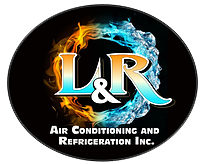The EPA Says Indoor Air Quality Affects Many People
A recent study by the Environmental Protection Agency says that concentrations of pollutants can be 2 to 5 times stronger inside buildings than outdoors. The report also says Americans spend up to 90 percent of their time indoors. Those who are most susceptible to adverse effects of poor indoor quality tend to spend most of their time indoors. These include the very young and very old, and people with cardiovascular and respiratory issues.
Source of Indoor Pollutants
These are some ways that indoor air quality can be compromised:
- Mold, viruses, or bacteria
- Volatile organic compounds (VOCs)
- Carbon Monoxide
- Nitrogen Dioxide
- Radon
- Chemicals in building materials
- Lead (in pre-1978 homes)
- Asbestos
- Irritants such as pollen, dander, or dust
- Tobacco smoke
Signs of Indoor Air Pollutants
When the air in an indoor environment contains pollutants, occupants may show symptoms of eye, nose, and throat irritation. They may also have headaches, dizziness, nausea, or fatigue. Long term effects may include asthma, lung infections, cardiovascular conditions, or cancer.
Many signs of poor indoor air quality do not show up for several years. These are often the most serious cases. It is important to monitor your indoor air quality, be aware of sources of pollutants, and make sure your home has adequate ventilation.
What are some red flags to look for? Leaky air ducts, excessive condensation, negative air pressure, or inadequate ventilation may lead to poor indoor air quality. The presence of persistent mold in your home is a big red flag. In those cases, call a mold remediation expert immediately.
What Are Some Ways You Can Monitor Indoor Air Quality?
- Stop water leaks and dry them as soon as they are found. This will help prevent mold problems. Water damaged building materials like carpet, foam, or other materials can “off-gas” – meaning chemical compounds are released as a gas in small amounts.
- Monitor indoor humidity – it should be between 40 and 55% throughout the year. Condensation, mold, and mildew can form once it reaches 65% for an extended period of time.
- Don’t smoke tobacco indoors – no cigarettes, cigars, or pipes.
- Reduce dust and debris that enters the heating, cooling and ventilation system by cleaning your home regularly.
- Use eco-friendly, non-toxic cleaning chemicals.
- Change air filters in central AC or ductless HVAC regularly. Use filters that have a good air filtration rating.
- Test for indoor pollutants such as mold, bacteria, pollen, Volatile Organic Compounds (VOCs), carbon dioxide, carbon monoxide, lead, asbestos, and radon.
"Indoor pollution sources that release gases or particles into the air are a primary cause of indoor air quality problems in homes.
Inadequate ventilation can increase indoor pollutant levels by not bringing in enough fresh outdoor air to dilute emissions from indoor sources and by not carrying indoor air pollutants out of the home.
High temperature and humidity levels can also increase concentrations of some pollutants."


